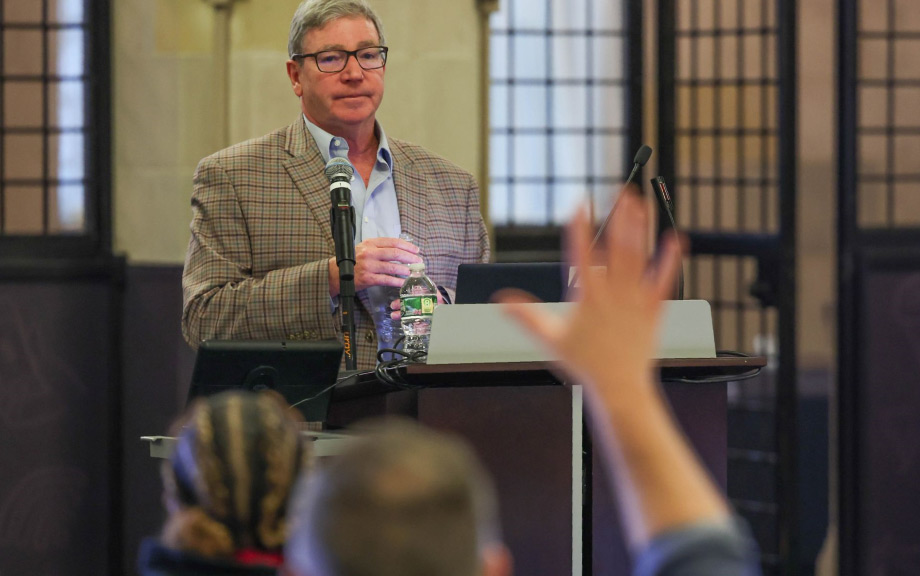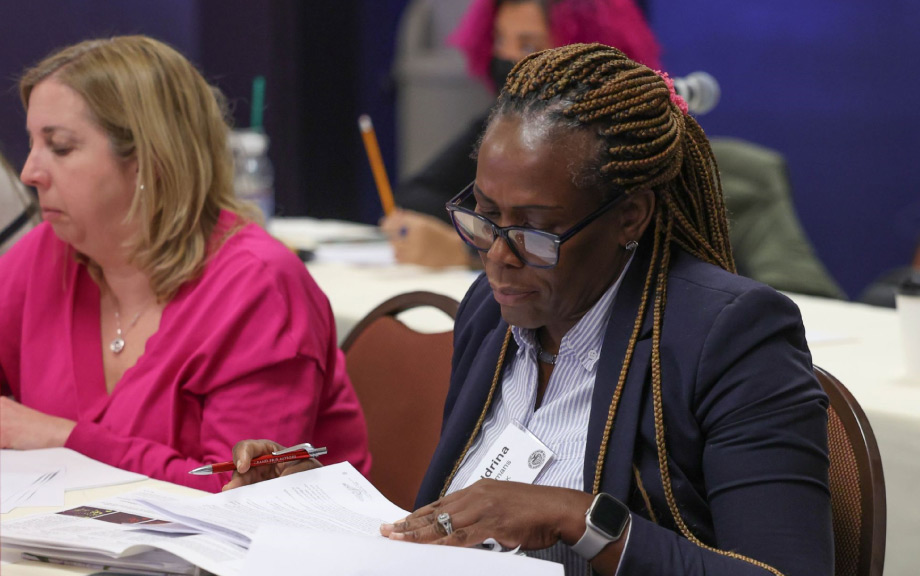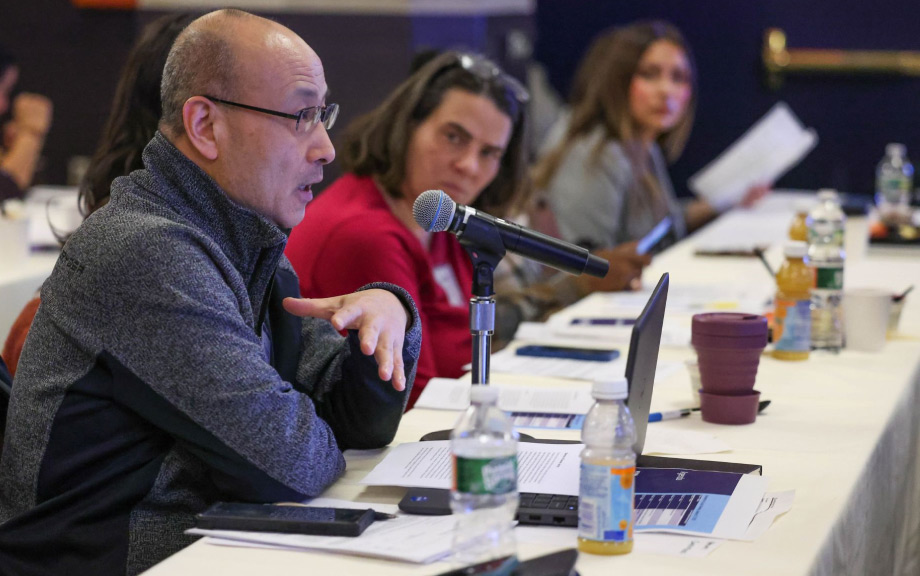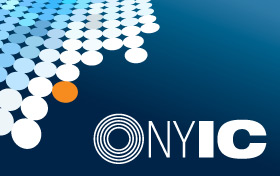
The 45 high school teachers had questions for Andrew Haughwout, the New York Fed’s deputy director of research.
What would he counsel students weighing college? Is it still a good investment? What’s behind the shrinking number of middle-wage jobs in New York City?
The questions were part of a teacher training the New York Fed’s Economic Education team hosted in January. The team, an accredited provider of teacher professional development, hosts between four and eight in-person teacher trainings a year, reaching almost 600 teachers.
The trainings emphasize learning how to think like an economist and understanding key economic concepts. That can mean everything from working with a diffusion index to learning which colleges excel at elevating their graduates into the middle class.
The Economic Education team often gives teachers a chance to hear from experts. At the January training, Haughwout, whose areas of expertise include applied microeconomics, urban economics, and housing markets, discussed household finances and New York City’s post-pandemic recovery.

His presentation detailed how New York City has gained back all the jobs it lost to the COVID-19 pandemic—numerically. But that doesn’t mean everyone who lost a job got the same job back. The city’s job polarization, meaning growth at the high and low ends of the wage distribution, has grown since the pandemic, he said. Meanwhile, the number of middle-wage jobs has stagnated.
Looking deeper, most of the increase in low-wage jobs came from a single category: home health aides. Growth in the number of home health aides accounted for half of net new healthcare jobs between February 2020 and August 2024, Haughwout said.
The geography of where people work has also changed since the pandemic, he told the teachers. Employment in Brooklyn grew more than 6 percent from February 2020 to March 2024, while employment in Queens and Staten Island increased by between 3 and 6 percent. In Manhattan, however, employment shrunk during the period.
Some of the geographic changes in job growth are related to people working from home. A large share of work is still being done remotely, he said. This has hurt businesses that depend on office workers, like restaurants and retail stores, he said.
“Prior to the pandemic, there was about one foot traffic job for every two office jobs,” Haughwout said. “Now it takes two and a half office jobs to support one foot traffic job,” since so many office workers are still either entirely remote or working a hybrid schedule and not going to the office every day.
Overall, New York City employment is 2 percent above its pre-pandemic level, he said. “While the city has recovered in a lot of ways, it’s not where it would have been absent the pandemic,” Haughwout said. “If the city had continued on its prior trend, we’d have a lot more jobs than we have now.”

Turning to the teacher’s questions, he talked about stagnation in New York City’s middle-wage jobs. “The city’s economy is very focused on high-skill jobs, such as securities and technology,” he said. The number of middle-wage jobs has declined in areas such as administrative support, where technology has largely replaced workers, he said.
Haughwout also discussed household finances, saying household debt, a major part of the economy, has risen steadily since the Great Recession. Debt delinquencies have risen recently, he said, evidence that some households have been struggling.
He talked about student debt, which affects a broad set of households. While delinquencies on student debt have been suppressed by past government programs, they are typically quite high without such programs. As for whether college pays off, he told the teachers that, overall, college is still worth it, adding that there’s economic research about which schools have success at getting graduates into the middle class. The City University of New York scores well on that metric, he said.
He added, “There are lots of ways to acquire skills other than college. Borrowing a lot for college or other post-secondary education and not completing the program often doesn’t work out well, so if you start, try to finish.”
See our full schedule of upcoming teacher professional development opportunities.
Ellen Simon is a corporate communications specialist in the Communications and Outreach Group at the New York Fed.
The views expressed in this article are those of the contributing authors and do not necessarily reflect the position of the New York Fed or the Federal Reserve System.










